Review: Monk
Score:
74%
Is it possible to implement the ultimate composer's tool on a 4.5" screen on a smartphone? Is it possible to cram every possible combination of scale type, every chord, every inversion, all into a tool that's usable on something so relatively small? Yes, but only just.
Version Reviewed: 1.6.0
Buy Link | Download / Information Link
Music, contrary to what you might think if you've only ever dabbled by playing 'Chopsticks' in C major on a piano, can be insanely complicated. Insanely. For example, you'll know about the traditional Western Ionian mode (e.g., in the key of G, G, A, B, C, D, E, F#, etc.) but what about other ways of getting between a root note and its octave? It turns out that there are an awful lot of ways, all represented in Monk here. In fact, even this is, theoretically, only scratching the surface, since what about musical systems which involved different intervals between semitones (i.e. more than 12 half tones between octaves)?
At which point I should tell you that, if you're still reading this review and if your eyes haven't glazed over, then you've passed the test. And you'll love Monk for Windows Phone. It's a superbly comprehensive musician's - and, even more specifically, a composer's - tool.

Don't be too put off by the density of the interface and garishness of some of the colours - it's all quite well thought out. But do allow a good hour's playing before you judge Monk - there's more here than you might think.
First of all, don't get too hung up on the playable mini keyboard at the top of the screen - yes, you can try to play it and yes, it's polyphonic after a fashion, but it's very fiddly and there's only one basic piano sound - this keyboard is as much for display as for control. In particular, as various scales, chords and inversions are selected, the notes light up and play, as needed (chords can be set to sound together or in arpeggios, i.e. breaking down the component notes, as per personal preference).
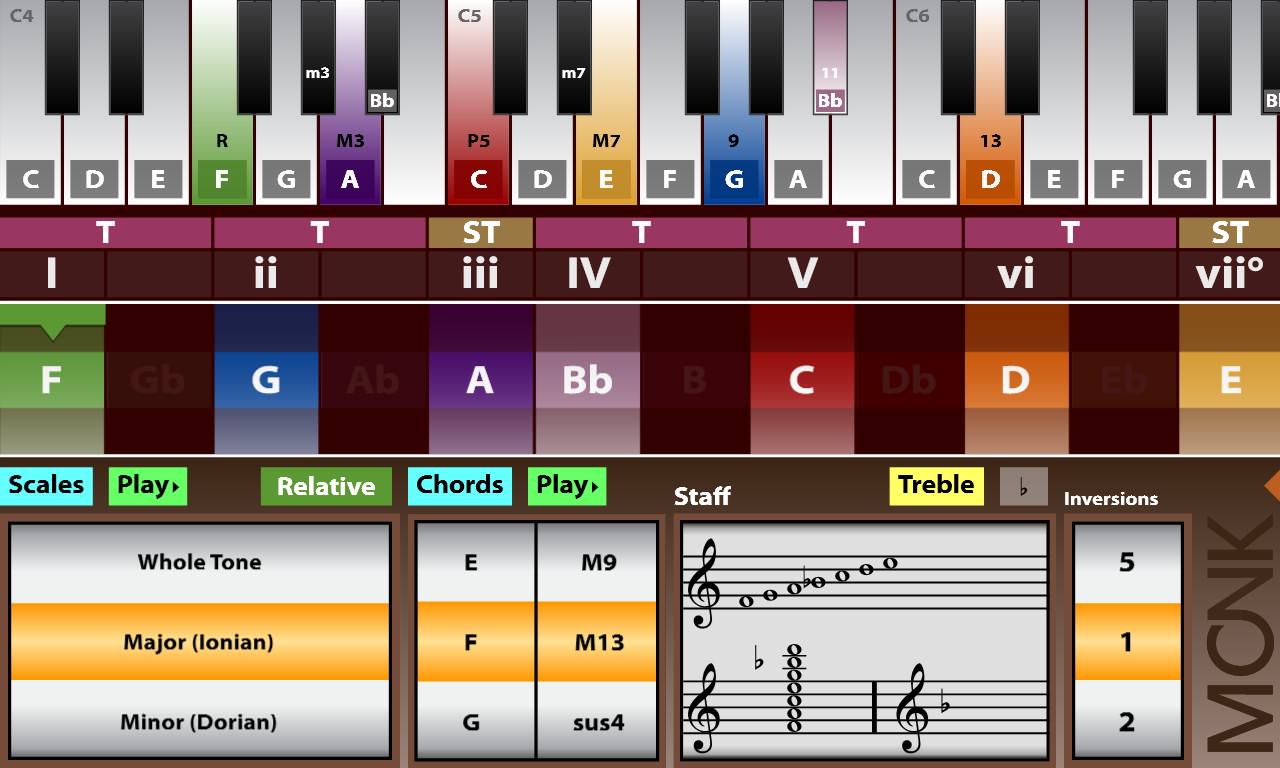
Around the interface, we have, from top to bottom, the piano keyboard, the major intervals in the current key, colour coded twelfths (i.e. semi tone notes), control buttons to toggle various settings, and then, along the bottom, spinners for scale/chord (as determined by the main settings menu), chords, musical notation, inversions of each chord and (labelled 'MONK') a button to call up the main settings and other program options.
Now bear with me since I'm only a very limited amateur composer (think one man and his guitar and synth and very little talent), but a typical use case might be that I'm stuck in the middle of a song with a boring major chord transition and I want something more jazzy, more interesting to insert. This is where the real talent comes in, of course. Or, in my case, using Monk to try out all sorts of wild and wacky variations until I hit upon something that might work. Later, in the sheet music, the reader will see Fm7b5 ("F minor seventh flattened fifth") and be impressed by the musical artistry that came up with it. Shhhh......
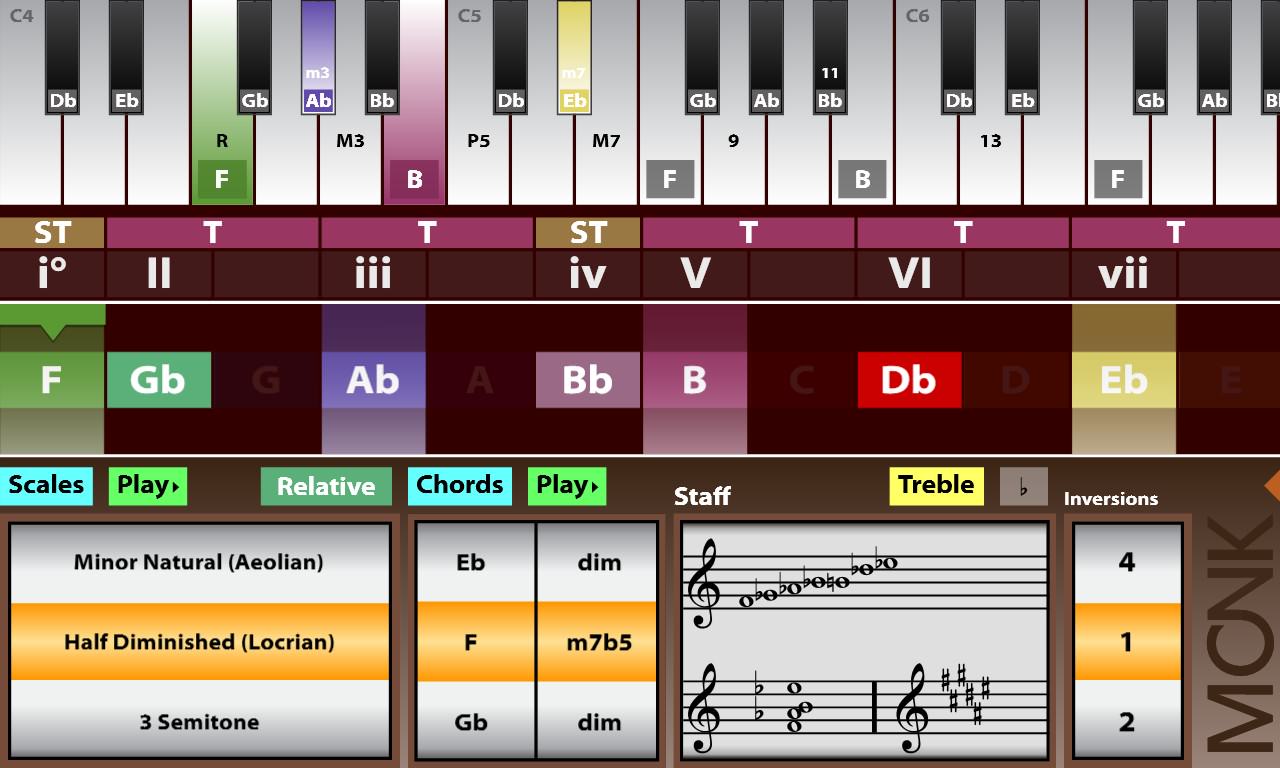
The bottom left spinner is switched from scales to chords using the main settings menu, partially shown below, in that 'Chord Finder' lets you pick combinations of notes and then the corresponding chord name is constructed - or in similar fashion you can pick notes and possible scales that these notes are found in can be browsed.
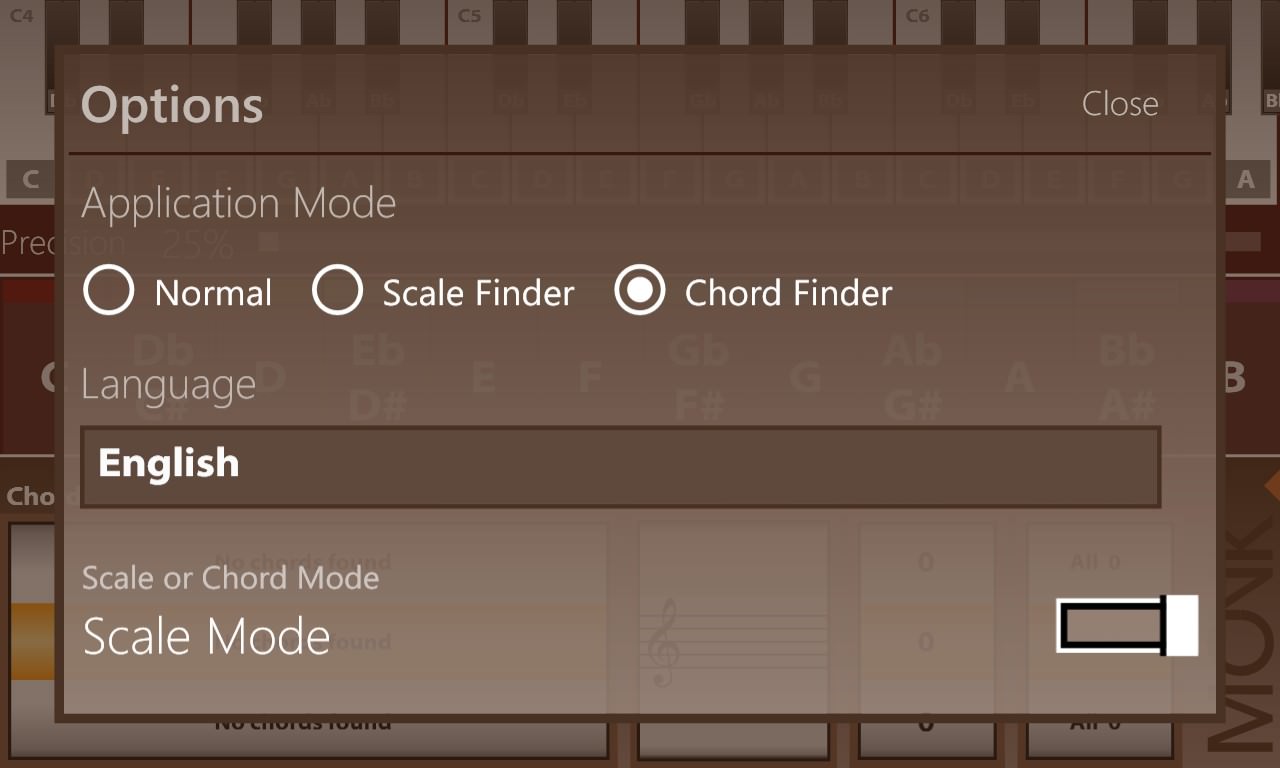
The interface, split between graphical controls, spinners, toggles and traditional menu switches, is complex and doesn't always make perfect sense, hence the learning curve hinted at earlier. Happily, you're not left high and dry, with a set of really rather excellent video tutorials fully integrated into Monk. Commentary is in English or Spanish and textual (overlaid) - I'd much rather have had a voice talk me through what was happening. This would have kept the on-screen visuals simpler, for a start. Maybe something for a future version?
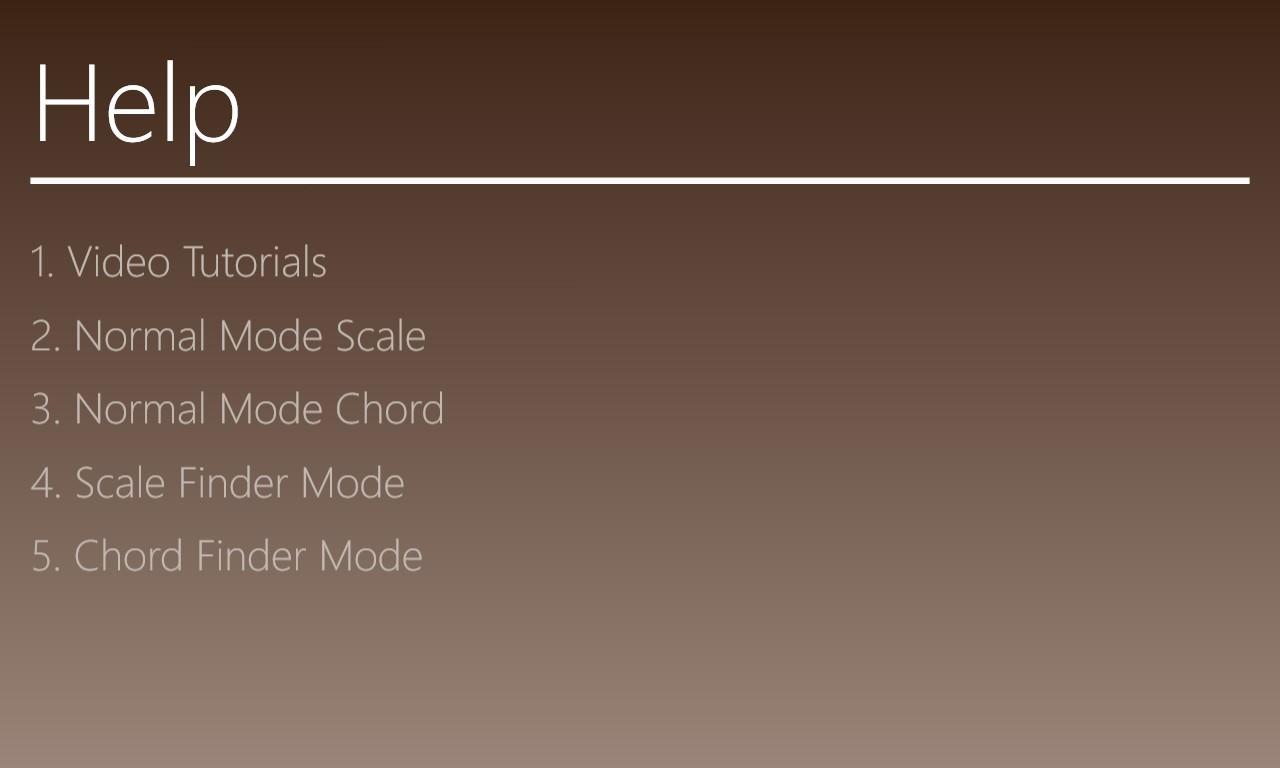
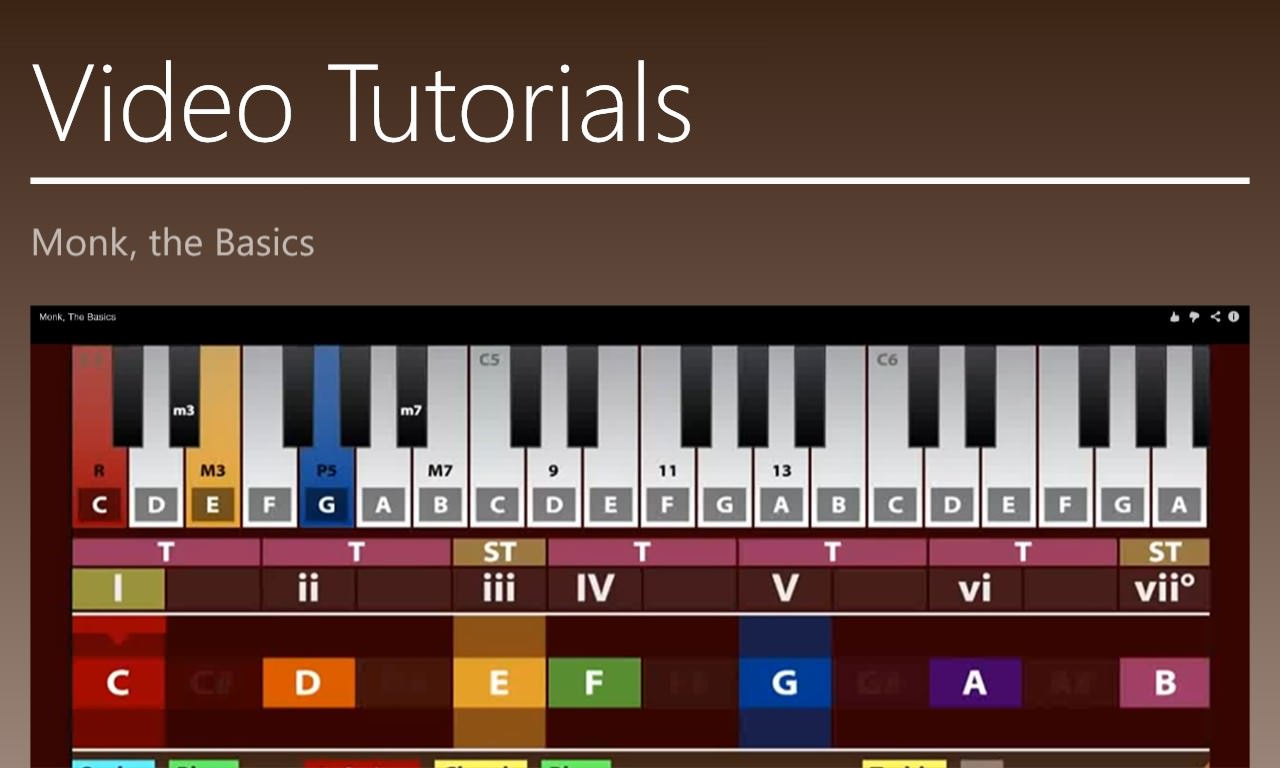
For all the very sophisticated programming in terms of the musical theory, the user experience isn't faultless - yet. I experienced several small audio and screen glitches, perhaps not surprising given the amount of concurrent touchscreen and audio threads that must be involved. I did note that Monk is very actively developed, with the last update only days ago, so I'm sure things will get polished further in the coming months.
There's a 'Lite' version, which is severely limited and best ignored. The full version is £2 but with a 24 hour trial version, which is a nice idea, albeit slightly on the pressured side. My advice to the developer? Make it £4 and 48 hours. After all, this is a niche tool in the extreme and, to anyone who needs it, even £4 is absolutely nothing in the grand scheme of things. And 24 hours really isn't enough, considering the number of things to get to grips with and the realities of daily life and other time pressures, etc.
A top notch musical aid for composers though, and one whichi s only going to get better and better.
Reviewed by Steve Litchfield at
